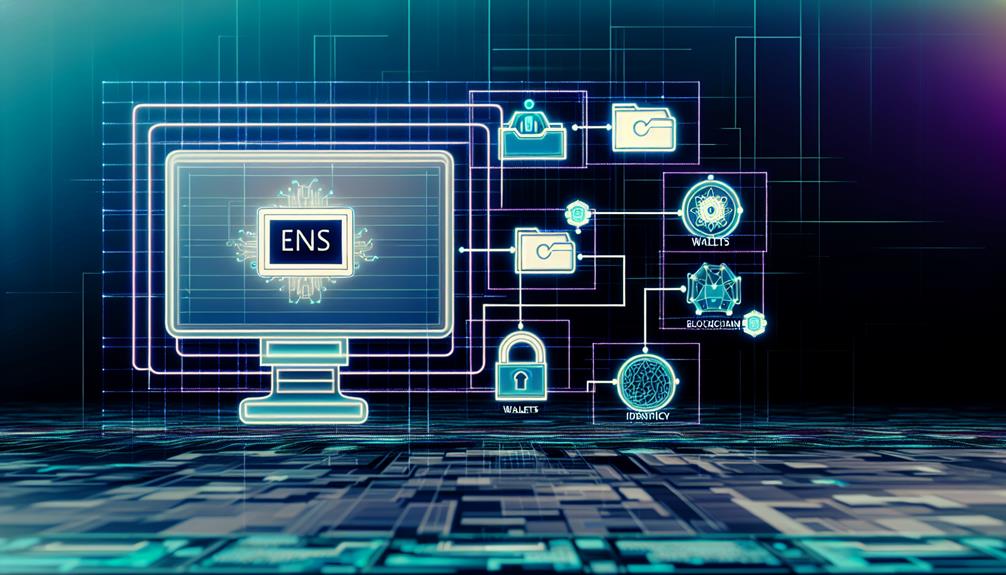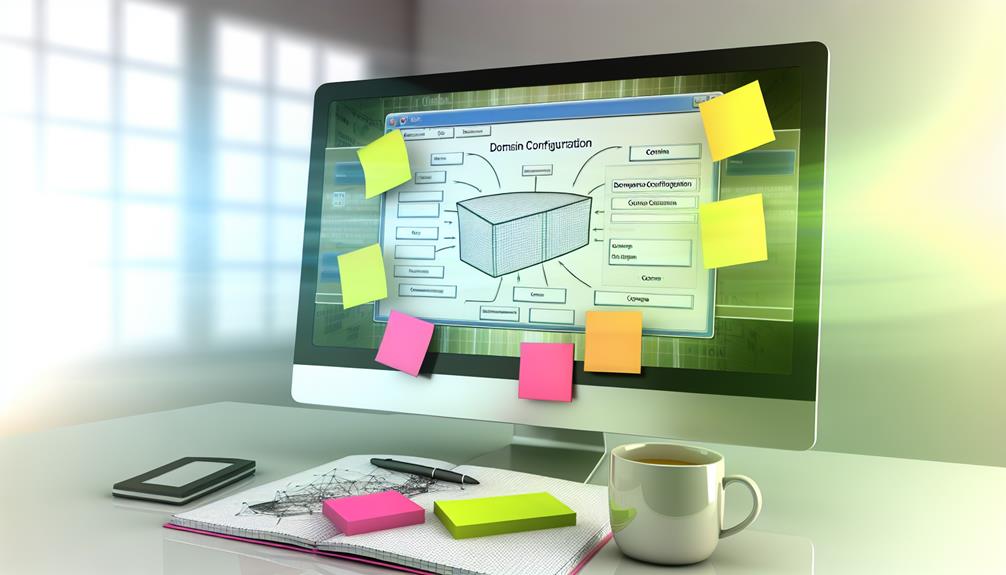Is it true that using Remote Desktop Protocol (RDP) can actually boost your efficiency in a remote work setting? Many professionals claim it streamlines their workflows, but the effectiveness can vary based on your specific needs and setup. You might find that RDP's features, like clipboard mapping and print redirection, could enhance your daily tasks, yet there are also potential drawbacks to evaluate. What if the key to maximizing your productivity lies in understanding how to harness RDP's capabilities effectively?
Remote Desktop Protocol (RDP)
Remote Desktop Protocol (RDP) allows you to access and control remote systems as if you're sitting right in front of them.
Understanding RDP involves exploring its key components, security protocols, and domain configurations that enhance its functionality.
What is RDP and How Does it Work?
Accessing a distant computer can feel as seamless as using your own, thanks to the Remote Desktop Protocol (RDP). This proprietary remote access protocol developed by Microsoft allows you to control a remote machine over a network connection. It transmits your input, like keyboard and mouse actions, to the server while relaying graphical user interface (GUI) updates back to you.
RDP operates within the ITU T.120 protocol family, which supports up to 64,000 separate channels for simultaneous data transmission. This capability is vital for real-time collaboration, as multiple users can access the same server simultaneously, enhancing resource sharing in remote work environments.
Security is paramount, and RDP provides a secure connection through advanced encryption techniques, ensuring your data transmission remains protected.
Additionally, RDP offers features like clipboard mapping for easy copy/paste between local and remote applications, and print redirection, allowing you to print documents from remote sessions to local printers.
Key Components of RDP
In understanding RDP, it's essential to recognize the architecture of the RDP Client and Server.
The RDP Client initiates the connection, allowing you to access the remote desktop, while the RDP Server manages the resources and provides the environment for your session.
Together, they form the backbone of remote computing, enabling efficient interactions and resource sharing.
RDP Client and Server Architecture
Understanding the RDP client and server architecture is essential for optimizing remote desktop experiences.
The client software initiates sessions, while the server, including the Remote Desktop Session Host, manages active user sessions.
RDP enhances user experience through features like clipboard mapping and print redirection, enabling seamless interaction between local resources and the remote environment, ultimately leveraging the ITU T.120 protocol for efficient communication.
RDP Security Protocols
RDP security protocols are essential for safeguarding remote connections against unauthorized access and potential threats. One of the key features of RDP security is Network-Level Authentication (NLA), which requires user verification before a remote session is established, considerably enhancing protection against unauthorized access.
Additionally, RDP employs strong encryption protocols, such as RSA Security's RC4 cipher, offering options for 56- or 128-bit key lengths to guarantee that data transmitted during remote connections is secure from eavesdropping.
Access controls play an important role in RDP security by defining user permissions and restricting access to sensitive applications and data. Regular software updates and security patches are critical to mitigate vulnerabilities, as outdated versions can be exploited by attackers.
To further bolster RDP security, implementing multi-factor authentication adds an extra layer of verification, while monitoring session logs allows you to track user activities for any suspicious behavior.
Different Types of RDP Domains
When considering RDP domains, you'll encounter various use cases tailored to specific environments like corporate networks and educational institutions.
Each domain has unique configurations, such as Network-Level Authentication and encryption, which enhance security and functionality.
Understanding these distinctions helps you optimize remote access and collaboration effectively.
Rdoc Domains and Their Use Cases
As organizations increasingly rely on remote access solutions, the structure of RDP domains becomes essential for effective management of resources and user permissions.
Consider these use cases:
- Streamlined user management with Active Directory
- Secure access through Network-Level Authentication
- Enhanced data protection via encryption
- Facilitated collaboration in multi-session RDP domains
These configurations empower you to optimize efficiency while safeguarding sensitive information.
RDP Domain Name: Importance and Configuration
In the domain of remote access, an RDP domain name plays a vital role in enhancing user experience and operational efficiency. By providing a memorable address, you can connect to remote desktops more easily than using IP addresses. This simplifies the user experience and reduces the likelihood of connection errors.
Configuring an RDP domain name involves setting up DNS records, making sure that remote desktop clients can resolve the domain to the correct server's IP address. This centralization allows for easier management of multiple servers, which is essential for organizations looking to streamline remote access.
Moreover, enhancing security is important in today's digital landscape. By implementing SSL certificates on your RDP domain name, you guarantee that communication encryption occurs between the client and server. This not only protects sensitive data but also builds trust among users.
Domain Management in RDP Settings
In managing your RDP settings, understanding the RDS domain name is essential for proper configuration and access control.
You'll also need to link your RDS to the root domain and identify the RDS license server within that domain to guarantee compliance and functionality.
Addressing challenges and implementing best practices in domain management will enhance your RDP efficiency and security.
What is an RDS Domain Name?
Efficient management of an RDS domain name is fundamental for guaranteeing smooth remote desktop operations within an organization. An RDS domain name serves as the unique identifier for the network domain where RDP sessions are organized and managed. It enables you to connect remote users to their designated desktop environments effectively.
When configuring your RDP settings, the RDS domain name plays an important role in user authentication and resource access. By linking user accounts to specific domain controllers, it guarantees that only authorized individuals can initiate remote desktop sessions. This linkage is essential for maintaining security protocols and appropriate access levels within your organization.
You can set up the RDS domain name using the Remote Desktop Session Host Configuration tool, allowing you to define the domain for user connections. In multi-domain environments, specifying the correct RDS domain name becomes even more significant for seamless integration across various organizational units.
Proper management of this domain not only enhances productivity but also protects sensitive information by guaranteeing remote users have the permissions they need without compromising security.
Linking RDS to Root Domain
Linking Remote Desktop Services (RDS) to the root domain streamlines user management and enhances security across your organization. By integrating RDS with Active Directory, you can establish centralized management of user access and permissions, simplifying the administrative process. This means you can assign domain user groups to RDS without needing individual configurations for each user, which saves time and reduces errors.
Moreover, this domain management in RDP settings allows you to enforce Group Policies effectively. By doing so, you guarantee compliance with security standards and maintain consistent user settings throughout the organization. This integration also facilitates the efficient management of Remote Desktop Session Hosts (RDSH), enabling IT administrators to apply updates or changes uniformly across all user sessions.
Additionally, proper linking of RDS to the root domain enhances the seamless integration of additional services like RemoteApp. This feature allows users to access specific applications hosted on remote servers directly from their desktops, further improving efficiency.
To summarize, linking RDS to the root domain not only optimizes user access but also fortifies your organization's overall security posture.
Finding RDS License Server in Domain
To effectively manage client access licenses (CALs) in your domain, you need to locate the Remote Desktop Services (RDS) License Server. This server is vital for authorizing multiple users to connect to Remote Desktop Session Hosts.
To find the RDS License Server, you can utilize the Remote Desktop Licensing Manager, which displays all available license servers on your network.
For ideal operation, verify that the RDS License Server is configured to automatically discover and register itself in Active Directory. This configuration simplifies management and guarantees compliance with licensing requirements.
Additionally, you can leverage the Group Policy Management Console to specify the RDS License Server for all Remote Desktop Session Hosts within your domain, facilitating centralized control over your licensing strategy.
Moreover, the query command line tool is invaluable for checking the status of RDS License Servers and their available licenses. It provides essential insights into your license usage and potential shortages, allowing you to proactively manage your CALs.
Challenges and Best Practices in Domain Management
After ensuring that your RDS License Server is properly configured, the focus shifts to managing the overall domain environment for Remote Desktop Protocol (RDP) settings.
Effective domain management is critical for maintaining security and compliance. You can streamline user access and permissions through Active Directory (AD), making it easier to adapt to business needs.
Here are some best practices to contemplate:
- Implement Group Policy Objects (GPOs) for consistent RDP configurations across all domain-joined machines.
- Establish strong password policies to mitigate unauthorized access and enhance overall security.
- Enforce account lockout policies to prevent brute force attacks and unauthorized logins.
- Conduct regular audits of user permissions and access logs to identify potential security breaches.
Additional Domain Types
As you explore additional domain types in Remote Desktop Protocol, consider the significance of RDNS, RDAP, and RDDS domains.
Each domain offers unique features and applications that enhance your RDP experience. Understanding these distinctions will help you optimize your IT infrastructure and resource management.
RDNS Domain and Its Relevance
A well-configured RDNS domain is fundamental for enhancing network security and efficiency, especially in remote desktop scenarios. By resolving IP addresses back to their corresponding domain names, RDNS considerably improves network communications. This is particularly important when authenticating remote connections, as it aids in identifying legitimate users while minimizing the risk of unauthorized access.
Effective domain management practices involving RDNS are essential for implementing robust security protocols. Many organizations integrate RDNS with other domain types, such as A, MX, and CNAME records, to create a thorough security framework. This synergy not only fortifies security but also streamlines the troubleshooting of connectivity issues that may arise during remote desktop sessions.
Furthermore, RDNS plays a key role in email delivery, as numerous email servers conduct RDNS lookups to validate the legitimacy of sending IP addresses. A properly managed RDNS domain consequently enhances overall network performance, ensuring that your remote desktop environment remains reliable and secure.
RDAP Domain and Its Features
Understanding the various domain types supported by Remote Desktop Protocol (RDP) can greatly enhance your remote access experience. RDP accommodates multiple configurations, including personal, workgroup, and domain environments, each providing different levels of user management and resource accessibility.
In a domain environment, RDP utilizes Active Directory for centralized user authentication, allowing you to streamline security management across numerous users and devices. This functionality is essential for organizations looking to maintain robust security while ensuring easy access.
Moreover, RDP supports additional domain types, such as Remote Desktop Session Host (RDSH), which enables multiple users to connect to a single server simultaneously. This feature fosters collaborative work and resource sharing, making it easier for teams to operate efficiently.
RDP also includes features like user profile and session management, allowing for tailored experiences based on user roles. This optimization enhances performance and accessibility across different domain types.
Additionally, RDP's support for Virtual Desktop Infrastructure (VDI) enables organizations to deploy virtual desktops, improving scalability and flexibility in resource allocation. Overall, these features contribute to a more efficient and effective remote access environment.
Overview of RDDS Domain and Its Applications
Exploring the Remote Desktop Services Domain (RDDS) reveals its vital role in enabling efficient remote access and collaboration. This domain allows multiple users to connect to a single server, fostering collaborative work environments while accessing applications and files remotely.
RDDS supports various domain types, including session-based desktops, virtual desktops, and RemoteApp programs, giving you flexibility based on your organizational needs.
By leveraging RDDS, you can centralize application management and updates, greatly cutting down the time and costs associated with maintaining individual desktops. This centralized control not only streamlines operations but also enhances productivity across diverse sectors.
Whether you're a telecommuter, part of an IT support team, or working in an educational institution, RDDS facilitates remote access for various user groups, optimizing workflows and ensuring seamless collaboration.
Moreover, implementing RDDS contributes to improved compliance and security by maintaining centralized control over user permissions and access to sensitive data. This approach mitigates the risks associated with unauthorized access, ensuring a secure working environment for all users.
Comparing RDP Domain and Other Domain Types
When comparing RDP to other remote access technologies, it's clear that each has its strengths and weaknesses tailored to different needs. RDP operates primarily within a Windows domain environment, providing seamless integration and management of remote sessions. This makes it highly effective for collaborative work where multiple user sessions are needed.
In contrast, remote desktop solutions like VNC offer cross-platform compatibility, allowing connections across different operating systems. However, this flexibility often comes with reduced performance and security.
One of the significant advantages of RDP is its robust security features, including Network Level Authentication (NLA). NLA requires user verification before establishing a remote session, enhancing overall security—a feature not commonly found in all remote access protocols.
Additionally, RDP is optimized for Windows environments, delivering superior performance and integrated functionalities such as printer redirection and clipboard sharing. Other protocols may lack these capabilities, making RDP the preferred choice in Windows-centric networks.
Ultimately, your choice between RDP and other domain types will depend on your specific needs for security, performance, and compatibility.
Operational Guidelines for RDP Without Domain
When using RDP without a domain, you'll need to guarantee proper configuration for effective access.
Consider both the advantages and disadvantages of this setup, along with practical tips to secure your remote connections.
Additionally, exploring future trends and case studies can provide valuable insights into optimizing your RDP experience.
Using RD Gateway Without Domain
How can you effectively use RD Gateway without a domain? Start by setting up your RD Gateway on a Windows Server, ensuring you install the Remote Desktop Gateway role service.
You'll need a valid SSL certificate to secure communications. This allows for secure remote access to your internal network resources without requiring a domain.
Next, configure your firewall settings. Open TCP port 443 to allow incoming connections vital for RDP. This setup is essential for maintaining the integrity and security of your connections.
When connecting, specify your gateway server's name in the Remote Desktop Connection client. Navigate to the "Advanced" settings and enable the "Use these RD Gateway server settings" option. This will direct your RDP client to utilize the RD Gateway for establishing the connection.
Regarding authentication methods, you have options like username/password combinations or smart card authentication, providing flexibility while ensuring security.
Advantages and Disadvantages of Non-Domain RDP
While non-domain RDP setups simplify remote desktop access for small businesses or personal use, they come with distinct advantages and disadvantages that users must consider.
One key advantage is the ease of connection without requiring a centralized Active Directory. This can be beneficial for users who need quick access without complex configurations.
However, managing user credentials locally on each machine introduces significant challenges. This can lead to inconsistent security practices and increased administrative overhead, as you'll need to guarantee every device is configured correctly.
Additionally, non-domain RDP lacks centralized group policy controls, which limits your ability to enforce uniform security settings and access permissions across devices. Consequently, you may find yourself facing limited access to shared resources and applications that depend on domain authentication.
Moreover, security risks are heightened in non-domain environments. The absence of advanced authentication methods makes your systems more vulnerable to unauthorized access and attacks, increasing the stakes for data protection.
Ultimately, while non-domain RDP offers convenience, it demands careful consideration of its security implications and operational limitations.
Practical Tips for Secure RDP Access
Securing Remote Desktop Protocol (RDP) access is essential in minimizing vulnerabilities, especially in non-domain environments.
By implementing strong security measures, you can considerably enhance your protection against unauthorized access and cyber threats.
Here are some practical tips to help you secure your RDP access:
- Enable Network Level Authentication (NLA): This guarantees users are authenticated before starting a remote session, adding a critical layer of security.
- Use strong, unique passwords: Employ a password manager to generate complex credentials that resist brute-force attacks, making it harder for attackers to gain access.
- Implement a Virtual Private Network (VPN): This adds an extra layer of encryption to your RDP connections, protecting your data from eavesdropping during transmission.
- Monitor and log RDP sessions: Regularly reviewing logs allows you to detect suspicious activities and respond promptly to potential security breaches.
Future Trends in Remote Desktop Protocol
As you explore the future trends in Remote Desktop Protocol (RDP), consider how market analysis reveals a shift towards cloud integration and AI optimization.
Experts emphasize the importance of enhanced security and user-friendly interfaces to accommodate a broader range of users.
Understanding these evolving dynamics will be essential for effectively implementing RDP without a domain in diverse environments.
Market Analysis of RDP Technology
The Remote Desktop Protocol (RDP) market is on the verge of substantial transformation, fueled by trends in remote work and cloud technology adoption.
With a projected CAGR of over 12% through 2028, organizations are shifting towards cloud services that enhance efficiency and security.
Advances in AI will refine RDP functionalities, while regulatory demands push for improved security measures, ensuring robust user experiences.
Expert Opinions on RDP Evolution
With the RDP market poised for growth, expert insights highlight the direction of its evolution, particularly in operational guidelines for environments without a domain.
Future RDP solutions will emphasize strong password policies and robust security measures like multi-factor authentication.
Cloud-based remote desktop solutions will enhance scalability, while artificial intelligence improves threat detection and creates user-friendly interfaces, catering to diverse user needs.
Case Studies of RDP Implementation
Implementing Remote Desktop Protocol (RDP) without a domain can streamline remote access for specific users, leveraging local user accounts to maintain control. This approach allows you to enable RDP implementation without relying on Active Directory.
By utilizing the Local Group Policy Editor, you can set precise permissions and security settings, ensuring only authorized users can connect remotely.
To enhance security, enabling Network Level Authentication (NLA) is vital. NLA requires users to authenticate before establishing a remote session, which greatly reduces the risk of unauthorized access.
Additionally, implementing strong password policies for local user accounts will further bolster security, safeguarding sensitive information.
Using the Remote Desktop Services Configuration tool, you can manage connections effectively, setting session limits that optimize resource allocation and improve user experience.
Regularly updating your RDP client and server software is important to mitigate potential vulnerabilities. This practice is particularly important in environments lacking domain control, where security risks may be heightened.




